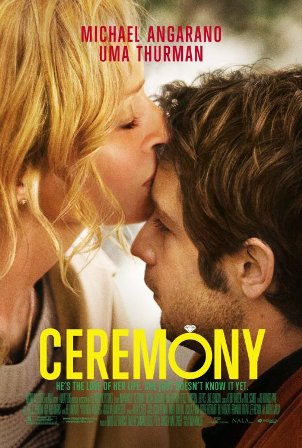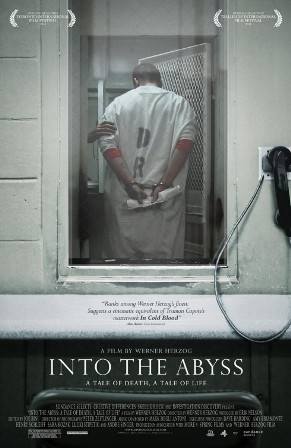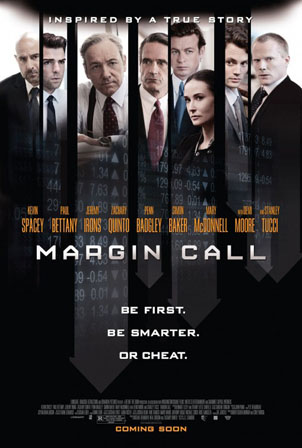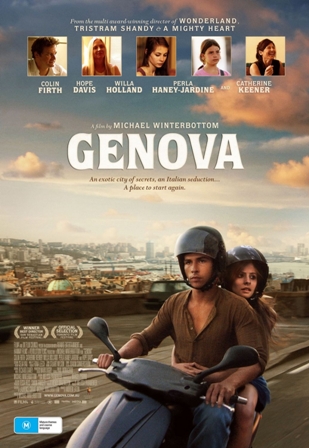CHICAGO – In anticipation of the scariest week of the year, HollywoodChicago.com launches its 2024 Movie Gifts series, which will suggest DVDs and collections for holiday giving.
Film Feature: The 10 Best Overlooked Films of 2011
And here are (drum roll please) The Top Ten Best Overlooked Films of 2011…
10.) “Ceremony”

Ceremony
How could the directorial debut of the Fonz’s son have slipped by unnoticed during its initial theatrical run? Max Winkler was only 25 when he shot “Ceremony,” a film dismissed by many critics as a mere imitation of Wes Anderson’s “Rushmore.” Yet the people Winkler has created within the pages of his richly textured script feel more tangibly human than Anderson’s colorfully heightened characters ever have. Instead of glorying in the manufactured personas of its insecure protagonists, the film probes under the surface of their self-deception, exposing the vulnerability beneath the façade. Described by Winkler as a “coming-of-age tale in reverse,” the film centers on Sam (Michael Angarano) and Marshall (Reece Thompson), two twenty-something friends whose once-close relationship has faded over the years. On the heels of his failed and blatantly autobiographical children’s novel, Sam orchestrates a trip that he claims is designed to help him and Marshall reconnect. Yet it becomes quickly obvious that Sam is withholding his true intentions, as he stealthily eyes his desired destination: an upscale gathering attended by his thirty-something ex, Zoe (Uma Thurman), and her sleek fiancé, Whit (played by Lee Pace with a dash if Russell Brand). It’s entirely to the credit of Winkler’s script that none of these people are reduced to the level of condescending caricatures. This is Thurman’s best non-Tarantino vehicle since Mira Nair’s 2002 TV movie, “Hysterical Blindness,” and she shares scenes with Angarano that are both endearing and painfully honest. Though the film supplies many laughs, it also offers a great deal of insight and bittersweet catharsis as its characters make the difficult journey toward self-acceptance and adulthood.
9.) “Into the Abyss”

Into the Abyss
What precisely does the Academy of Motion Picture Arts & Sciences have against Werner Herzog? Sure, the Academy threw him a bone in 2009 with a nod for “Encounters at the End of the World,” but that was just a make-up nomination for the criminal exclusion of Herzog’s 2005 effort, “Grizzly Man,” from the Oscar shortlist. Herzog’s portrait of ill-fated animal activist Timothy Treadwell was one of the best films of the decade, and though “Into the Abyss” isn’t quite in the same league, it still towers above most of the year’s documentaries. Herzog’s 3D exploration of ancient paintings in “Cave of Forgotten Dreams” has gotten more considerably attention, but this provocative meditation on the questionable morality of the death penalty is even more riveting. Some critics have complained that the film amounts to little more than a series of talking heads, but Herzog is tremendously skilled at getting the most out of his conversations with various human subjects. The filmmaker makes no secret of his own stance against capital punishment, but he never hesitates in allowing his interviewees to voice their own views. The camera lingers on the face of death row inmate Michael Perry, who’s living with the full knowledge that he’ll be gone from the earth in a matter of days. Perry’s crimes are unforgivable, but is his fate justified? This film is in the grand tradition of Herzog classics like, “Little Dieter Needs to Fly,” where the most unforgettable imagery is conjured by the words and nuances of storytelling.
8.) “Meek’s Cutoff”

Meek’s Cutoff
Some films set out to tell a self-contained story with a beginning, middle and end. Others aim to evoke a mood and feeling that illuminates some essence of the human experience. Viewers seeking closure and neatly tied plot threads are often frustrated with the latter, and a few of them let out howls of outrage earlier this year at a screening of Kelly Reichardt’s ominous, quietly gripping western. Yet any pat resolution to this yarn would’ve felt maddeningly false. This film aims to convey the frustration and paranoia of settlers navigating their way through the uncertain terrain of the Oregon desert, and on that level, the film is a flat-out triumph. Michelle Williams further solidifies her status as one of our finest actresses as Emily Tetherow, a women who grows increasingly weary of her group’s boastful guide, Meek (brilliantly played by Bruce Greenwood). Like Williams and Reichardt’s equally entrancing collaboration, “Wendy and Lucy,” this is a film about lost souls on a dangerous journey that may, or may not, have an end in sight. Once a lone Native American, credited as “The Indian” (Rod Rondeaux), is captured by the settlers, the film reaches a whole other level of intrigue. No film this year portrayed its period setting with such consuming power. There’s a heart-stopping moment when Williams desperately loads her shotgun to signal for help, and the time and effort it takes to simply load the shotgun creates a morbid fascination in the viewer. If anything, this picture is guaranteed to make modern viewers mightily pleased that they don’t live in 1845.
7.) “Margin Call”

Margin Call
The Screen Actors Guild should be penalized for failing to nominate what is unquestionably one of the best ensembles this year. Nope, I’m not referring to “The Smurfs.” J.C. Chandor’s terrifically tense thriller was one of the most assured feature debuts in years, assembling a pitch-perfect cast jam-packed with talent. Kevin Spacey is electrifying as Sam Rogers, the head of sales at an investment bank (modeled after Lehman Brothers), who’s alerted to an impending catastrophe discovered by a recently sacked employee, Eric (played by Stanley Tucci in a potent cameo). According to Eric’s dire calculations, excessive leverage could lead the firm to suffer a loss greater than its market capitalization. In other words, another stock market crash is inevitable. Zachary Quinto heads the peerless ensemble as a junior employee who first sheds light on Eric’s findings, while CEO John Tuld (a marvelous Jeremy Irons) sweeps in to initiate ill-advised damage control tactics. By viewing the impending financial iceberg through the eyes of the people who first spotted it on the ever-nearing horizon, Chandor humanizes the plight of Wall Street traders while bringing the audience up close to the primal greed and corruption residing beneath their polished façade. Rounding out the main players are Paul Bettany, Simon Baker, Mary McDonnell, Demi Moore and Penn Badgley. This easily gets my top vote for Best Ensemble of the Year.
6.) “A Summer in Genoa”

A Summer in Genoa
At age 50, Michael Winterbottom still seems like one of the freshest talents on the block. His ability to reinvent himself is almost unparalleled at a time when many of the world’s most respected filmmakers are all too happy to go to the same well more than twice. This is one of the best films Winterbottom has ever made, and it was released to little fanfare in 2008. Fortunately, the DVD arrived this year, and deserves to be sought out by cinephiles. It’s a riveting example of how effective Winterbottom’s guerilla style can be when put to the service of a compelling story. When his wife dies in a head-on collision, Joe (Colin Firth) is left solely in charge of his two girls, the elder (Willa Holland) bursting with hormones and resentment, the younger (Perla Haney-Jardine) wracked with guilt. Firth’s performance is a beautifully restrained piece of work, hinting at the vulnerability and raw pathos he would later exude in “A Single Man” and “The King’s Speech.” After his friend and former flame, Barbara (Catherine Keener) informs him of a teaching gig in Italy, Joe moves his family from Chicago to Genoa, which becomes somewhat of a schizophrenic character unto itself. While the picturesque buildings and sparkling beaches certainly appear welcoming, the sun is barely able to peek through the murky, claustrophobic alleyways. Marcel Zyskind’s handheld cinematography turns some shots into artful abstractions, such as the extreme close-up of Firth swimming to check up on his daughter. Under Zyskin’s lens, the chaotic texture of the water externalizes the parental anxiety and emotional insecurity that Joe tries so desperately to keep beneath the surface.


